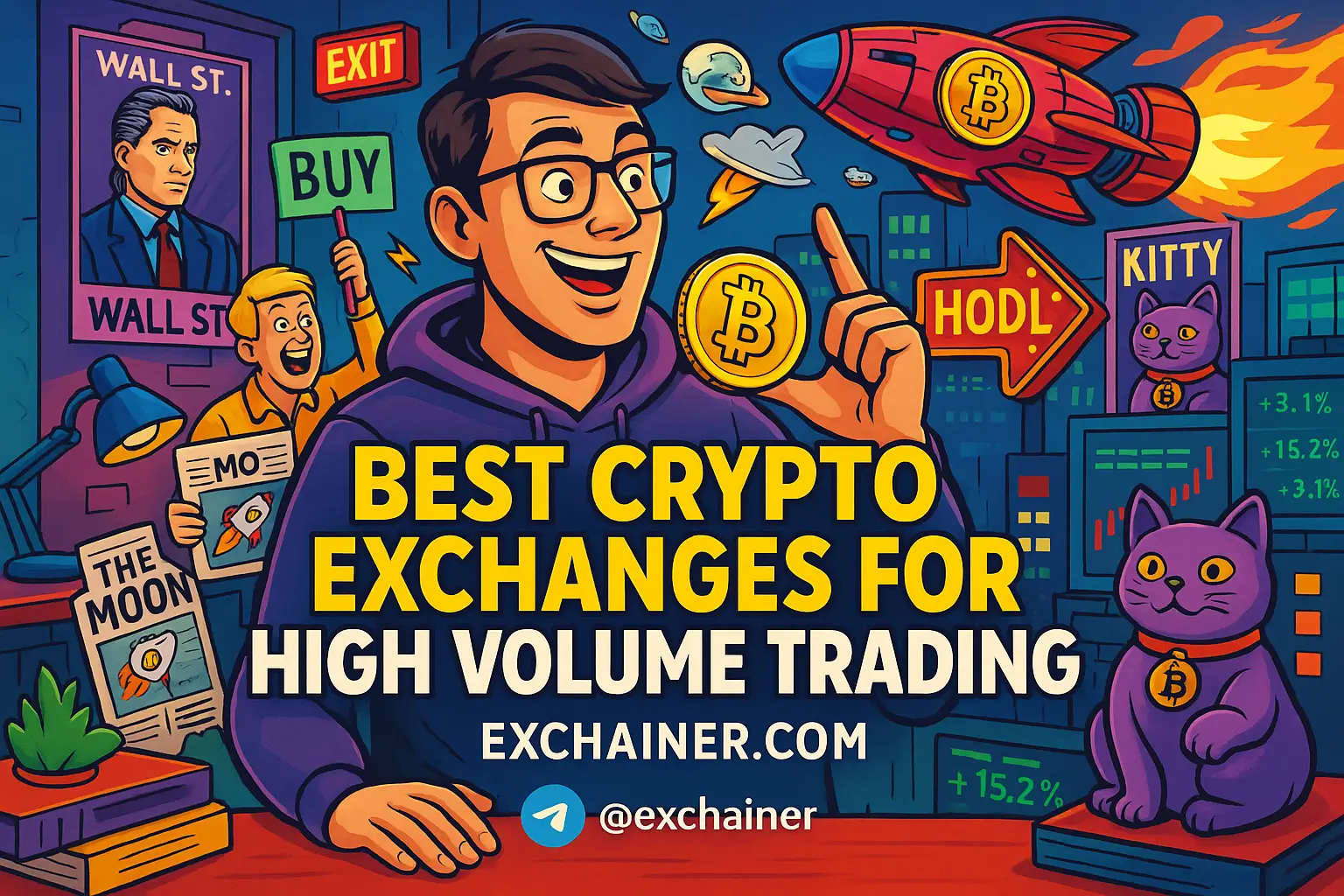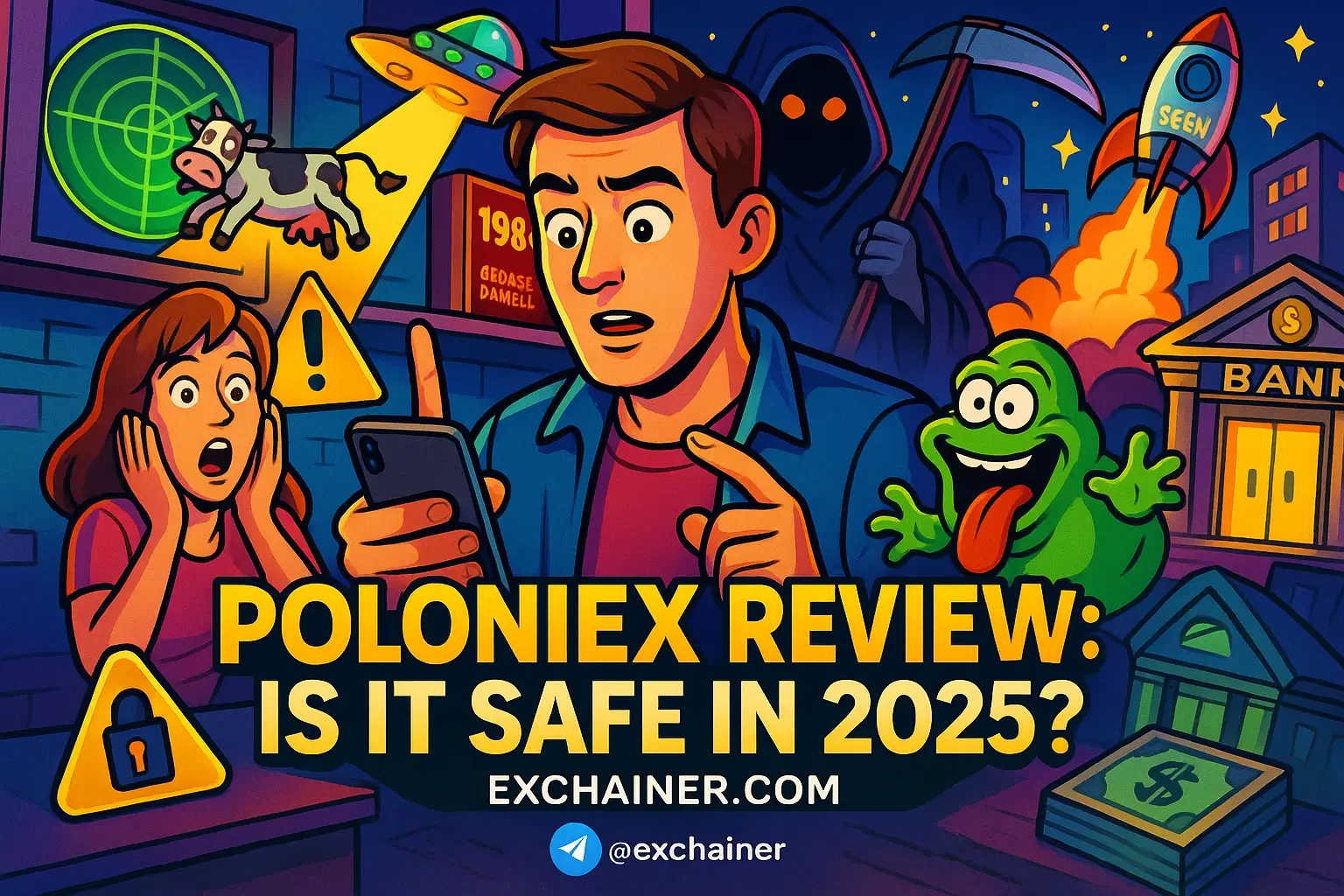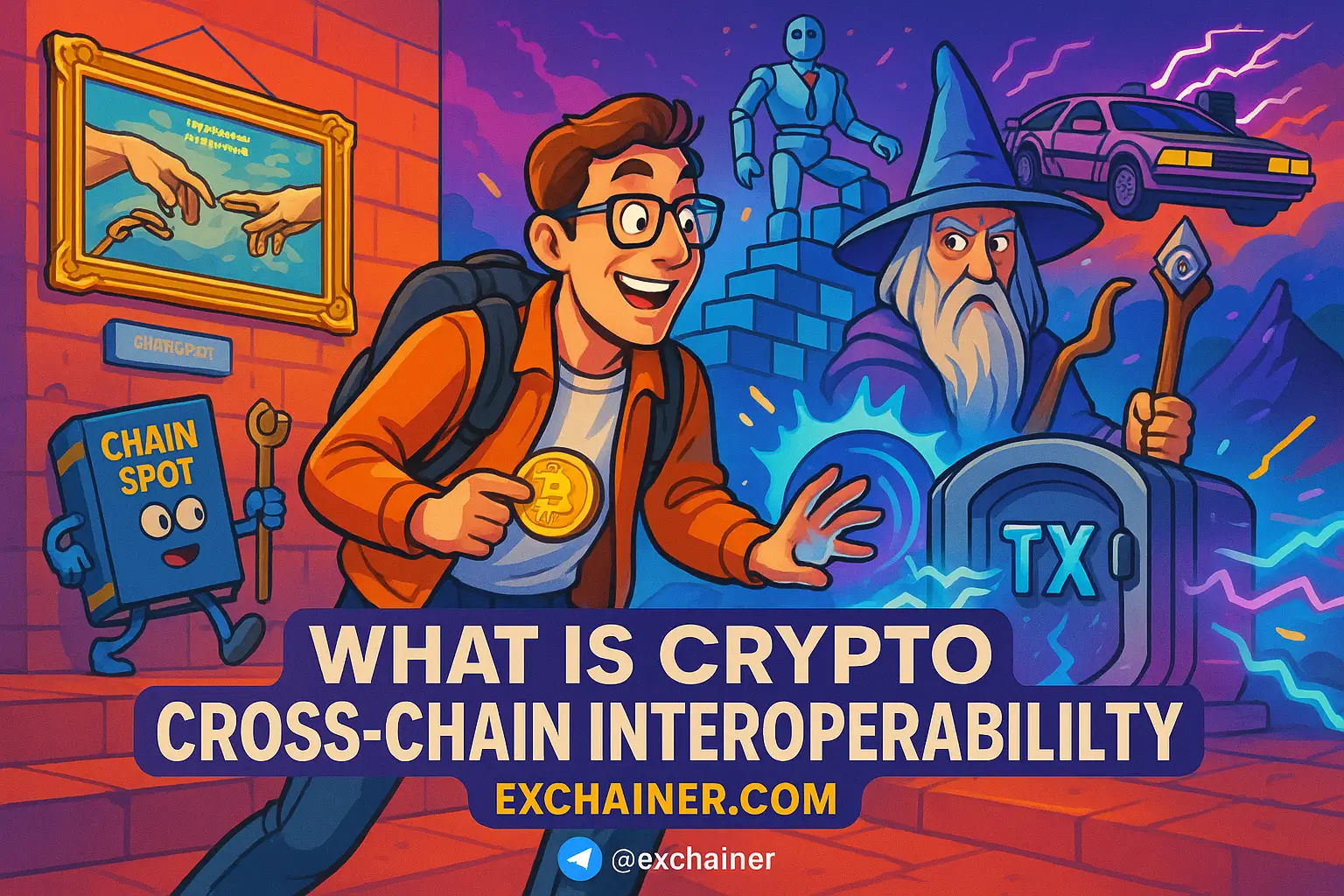Friends, if you’re diving into the fast-paced world of crypto trading and you’re handling large sums or rapid-fire orders, you already know the game isn’t the same as casual investing. The best crypto exchanges for high volume trading aren’t just about buying low and selling high. They’re about lightning-fast execution, robust liquidity, low fees, and solid security tailored for high-frequency and institutional players. Whether you’re a day trader juggling multiple positions, a proprietary (prop) desk managing complex algorithms, or an OTC (over-the-counter) trader executing block orders, this guide has your back.
What exactly counts as “high volume”? It’s more than just trading a lot; it involves handling large order sizes or rapid trade frequencies that most typical exchanges can’t handle efficiently without price slippage, order delays, or high transaction costs. Think tens of thousands or even millions of dollars in daily turnover. This requires specialized platforms that are engineered to meet intense performance needs. In this ultimate guide, we’ll break down the must-know criteria to spot the best crypto exchanges for high volume trading, including fee structures, liquidity metrics, derivatives support, security essentials, and trading infrastructure like APIs.
So, what’s on the menu? First, we’ll cover why low trading fees and smart fee structures are game changers when your daily volume adds up fast. Then, liquidity and order execution—the lifeblood of seamless trading. From there, we’ll jump into derivatives and leverage, providing you with tools to amplify gains (and manage risks). No trading talk would be complete without diving into security and compliance practices that protect both your funds and reputation. Lastly, we’ll explore APIs and algorithmic tools that allow you to automate and optimize trades at scale. Let’s set you up for market success today.
Low Trading Fees and Fee Structure
When you’re trading big, fees can eat away at profits faster than you think. The best crypto exchanges for high volume trading often differentiate themselves with competitive fee tiers and clever maker/taker fee models. Here’s why it matters.
Fee Tiers and Maker/Taker Models
Most exchanges offer tiered pricing — the more you trade, the lower your fees. This model rewards volume, but the nuances make all the difference. It’s crucial to understand the maker vs taker fees:
Maker fees are charged when you add liquidity to the order book (placing limit orders that aren’t executed immediately). Many exchanges incentivize makers with lower fees or even rebates because they help maintain market depth. For high volume traders, becoming a maker can significantly reduce costs.
Taker fees apply when you remove liquidity by executing trades against existing orders. These tend to be higher because takers “consume” liquidity. If your strategy involves frequent taker orders, fee costs can skyrocket.
For example, Binance’s fee tiers start as high as 0.10% for takers and drop below 0.02% for the highest tiers. Plus, makers often enjoy rebates up to 0.01%. Understanding these fee mechanics lets you tailor your trading style or negotiate fees accordingly to keep expenses lean.
Fee Discounts, VIP Programs, and OTC Desks
Big traders often unlock extra perks. VIP or institutional-tier programs offer personalized fee discounts and faster customer service. Many top volume platforms maintain OTC desks that allow you to negotiate block trade prices off the open order books — a bonus if you handle giant ticket sizes.
At high tiers, fees sometimes drop under 0.01%, and with OTC, you can avoid slippage altogether by executing large trades discreetly at agreed prices. Consider exchanges like Kraken and Coinbase Pro, which cater to institutional clients with these specialized services.
Comparing Real-World Fee Examples
Here’s a quick illustration. If you’re trading $1 million per day and paying 0.10% per trade, you shelled out $1,000 just in fees. Drop that to 0.02%, and suddenly your daily fee is $200. Or better yet, if you’re a maker earning rebates of 0.01%, that’s money added back to your profits.
High-volume traders must calculate their exact fee load by mixing maker and taker trades based on their strategies—something every savvy trader should do before committing funds to an exchange.
Liquidity and Order Execution Performance
Good fees matter, but even at low cost, poor liquidity can wreck your trades. Liquidity and execution speed are pillars of high-volume trading. Let’s look under the hood.
Order Book Depth and Spreads
Liquidity means there are enough buy and sell orders at various price levels to absorb your large trades without causing massive price swings. The order book depth shows this. Deep order books mean tighter spreads and less slippage.
Imagine placing a $500,000 buy order on a shallow book—it can push the price up quickly, increasing your average cost (slippage). Bigger order books balance this risk. Exchanges like Binance, FTX (before its collapse), and Bybit have rankings as top volume platforms partly because of their robust liquidity pools from diverse global participants.
Matching Engine, Latency, and Slippage
The matching engine is the software processing your orders, and its speed is crucial. Low latency (delay) ensures your trades hit the market as intended. High-frequency traders and market makers often co-locate servers near exchanges to cut milliseconds off their execution times.
High latency means higher slippage risk—your order could fill at worse prices. Exchanges with matching engines built for ultra-fast execution, such as Binance or Bitfinex, shine here.
Volume Metrics and Liquidity Sources
While 24-hour crypto trading volume numbers are often touted, they don’t always represent true liquidity. Wash trading and inflated volume reports can mislead traders. True liquidity depends on active market makers and pooled liquidity—sometimes across multiple venues under one platform.
Top volume platforms often partner with market makers and aggregate liquidity from various sources, ensuring that when you trade millions, the order book can handle it without a hiccup.
Derivatives, Leverage, and Risk Controls
High volume trading frequently extends beyond spot markets into derivatives, which let traders amplify exposure, hedge positions, or speculate on price moves without owning assets outright.
Futures, Perpetuals, and Leverage Options
Futures and perpetual contracts offer leverage — borrowing capital to increase buying power. Some exchanges allow up to 100x leverage, though this comes with massive risks. Leverage increases potential gains and losses exponentially.
Derivatives also expand trading opportunities by covering more assets and allowing short selling without owning the underlying token.
Risk Management Tools
Good exchanges give you tools like isolated vs cross margin options, letting you control risk either per position or collectively. Stop-loss orders, take-profit orders, and position limits help protect your capital from unexpected swings.
Funding Rates, Liquidations, and Transparency
In perpetual contracts, funding rates keep prices aligned with spot markets by charging long or short positions periodically. This cost (or income) impacts your carry trade strategy. Exchanges provide transparent info on funding schedules and liquidation rules, which is a must for professional traders.
Security, Custody, and Compliance for Large Accounts
Friends, security is no joke when you’re moving big money. A hack or freeze can ruin your trading career.
Custody Solutions and Cold Storage
Institutional traders seek exchanges offering dedicated custody solutions — multi-signature wallets, cold storage for offline asset safety, and compliance certifications like SOC 2 or ISO/IEC. This ensures your large holdings are safe from cyber threats.
Insurance, Audits, and Regulatory Compliance
Many top volume platforms offer insurance against hacks and undergo regular audits, including proof-of-reserves disclosures. Compliance with KYC (Know Your Customer) and AML (Anti-Money Laundering) rules is essential for institutional acceptance and to avoid suspicious activity flags.
Segregation of Client Funds and Audit Trails
Exchanges that segregate client funds from operational budgets reduce counterparty risk. Also, detailed audit trails and transparent fund flows are key for institutional accountability.
APIs, Algorithmic Trading, and Infrastructure
High volume traders heavily rely on trading bots and algorithms. The quality and reliability of an exchange’s Application Programming Interface (API) can make or break your strategies.
API Reliability and Rate Limits
Look for exchanges offering robust APIs with WebSocket support for live data streams, minimal rate limits, and stable uptime. REST APIs are common but slower; WebSockets are better for real-time trading. Top platforms also provide API documentation and sandbox environments for testing strategies safely.
Smart Order Routing and Execution Algorithms
Advanced traders use algorithms like TWAP (Time-Weighted Average Price) or VWAP (Volume-Weighted Average Price) to slice big orders and reduce market impact. Some exchanges support iceberg orders that hide true order size to avoid tipping the market.
Smart order routing can connect to multiple exchanges to find the best prices, essential for arbitrage desks.
Monitoring, Backtesting, and Connectivity
Being able to monitor latency, test strategies against historical data and access FIX protocol support are hallmarks of a professional trading platform. Co-location services—where your servers sit close to the exchange’s infrastructure—also help minimize delays.
Conclusion
Picking the best crypto exchanges for high volume trading boils down to weighing a bunch of crucial factors: from low trading fees and deep liquidity to sophisticated derivatives and ironclad security. The goal is to trade large amounts swiftly and cost-effectively, with little friction or risk.
For market makers, who provide liquidity, priority should be on tiered fee structures rewarding makers and ultra-low latency order execution. Prop trading desks benefit from powerful APIs, derivatives with flexible risk controls, and advanced order types. Institutional traders should emphasize insurance, custody, and regulatory compliance alongside trading capacity.
Before locking in, test exchanges via their testnet APIs, use fee calculators, and try simulated trading. Don’t be shy about checking multiple platforms to find your perfect fit. Lurking behind headline 24h volumes are subtle differences that can impact your bottom line.
Ready to dig deeper? Explore creditable exchange reviews on Exchainer Exchange Reviews, read beginner support articles over at Crypto 101, or gear up with the latest secure wallet tips found at Tools and Wallets. Your high-volume trading journey starts here – get informed, stay smart, and trade confidently!
And remember, successful crypto trading isn’t just about what coin to pick but where and how you execute your trades. Smart choices in selecting the right exchange can add unseen efficiency and cost savings that accumulate big wins over time.
Happy trading, friends!






